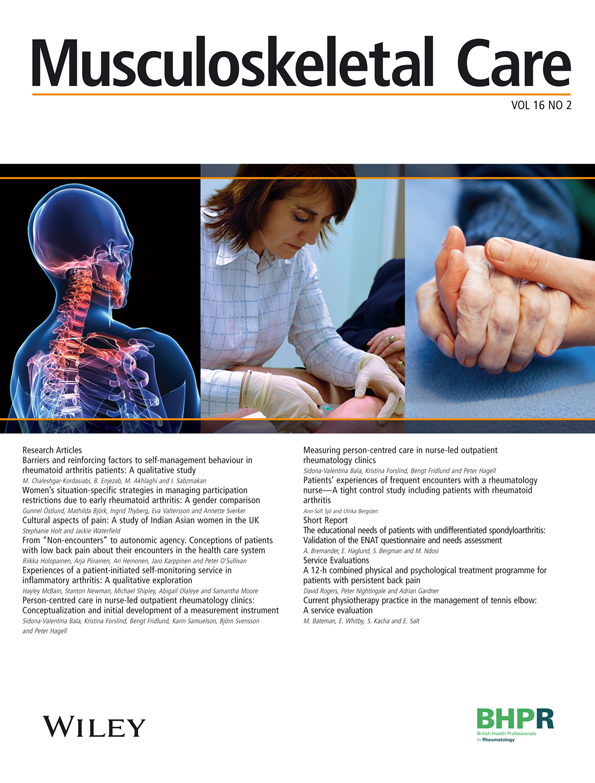Measuring person-centred care in nurse-led outpatient rheumatology clinics
Abstract
Background
Measurement of person-centred care (PCC) outcomes is underdeveloped owing to the complexity of the concept and lack of conceptual clarity. A framework conceptualizing outpatient PCC in rheumatology nurse-led clinics has therefore been suggested and operationalized into the PCC instrument for outpatient care in rheumatology (PCCoc/rheum).
Objective
The aim of the present study was to test the extent to which the PCCoc/rheum represents the underpinning conceptual outpatient PCC framework, and to assess its measurement properties as applied in nurse-led outpatient rheumatology clinics.
Methods
The 24-item PCCoc/rheum was administered to 343 persons with rheumatoid arthritis from six nurse-led outpatient rheumatology clinics. Its measurement properties were tested by Rasch measurement theory.
Results
Ninety-two per cent of individuals (n = 316) answered the PCCoc/rheum. Items successfully operationalized a quantitative continuum from lower to higher degrees of perceived PCC. Model fit was generally good, including lack of differential item functioning (DIF), and the PCCoc/rheum was able to separate individuals with a reliability of 0.88. The four response categories worked as intended, with the exception of one item. Item ordering provided general empirical support of a priori expectations, with the exception of three items that were omitted owing to multidimensionality, dysfunctional response categories and unexpected ordering. The 21-item PCCoc/rheum showed good accordance with the conceptual framework, improved fit, functioning response categories and no DIF, and its reliability was 0.86.
Conclusion
We found general support for the appropriateness of the PCCoc/rheum as an outcome measure of patient-perceived PCC in nurse-led outpatient rheumatology clinics. While in need of further testing, the 21-item PCCoc/rheum has the potential to evaluate outpatient PCC from a patient perspective.




